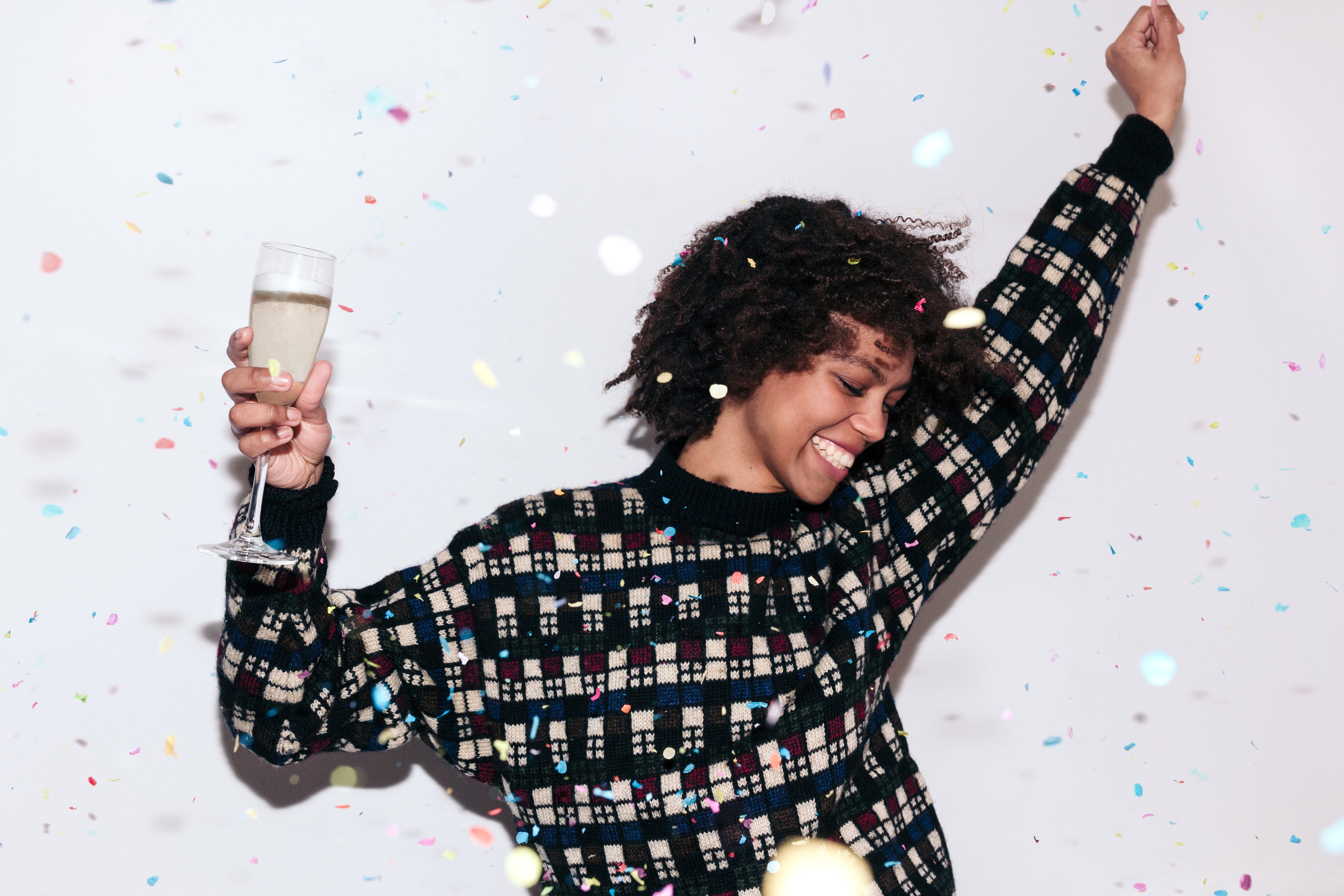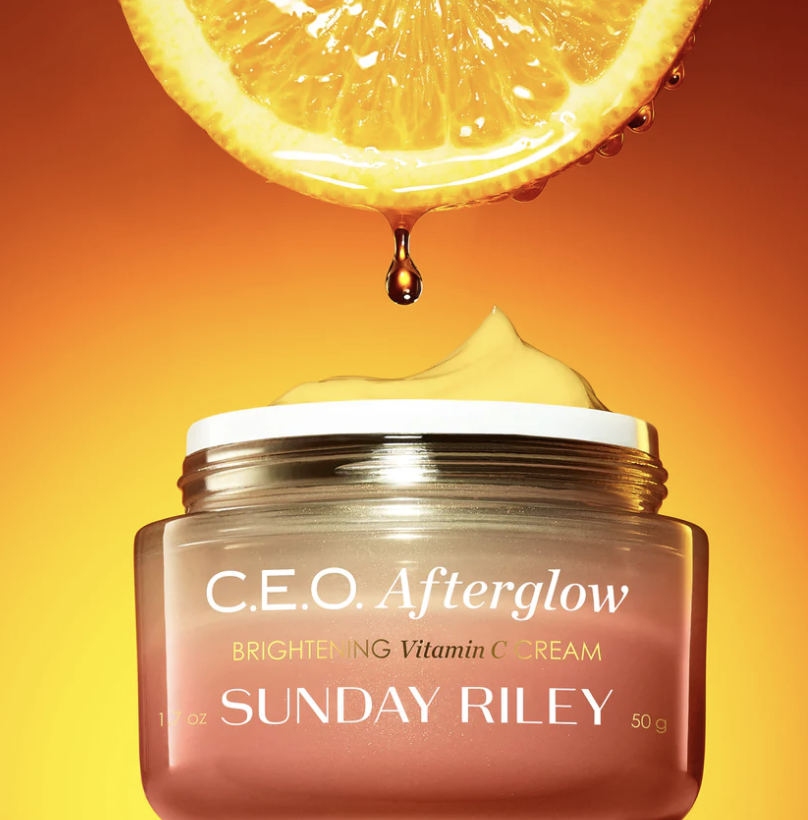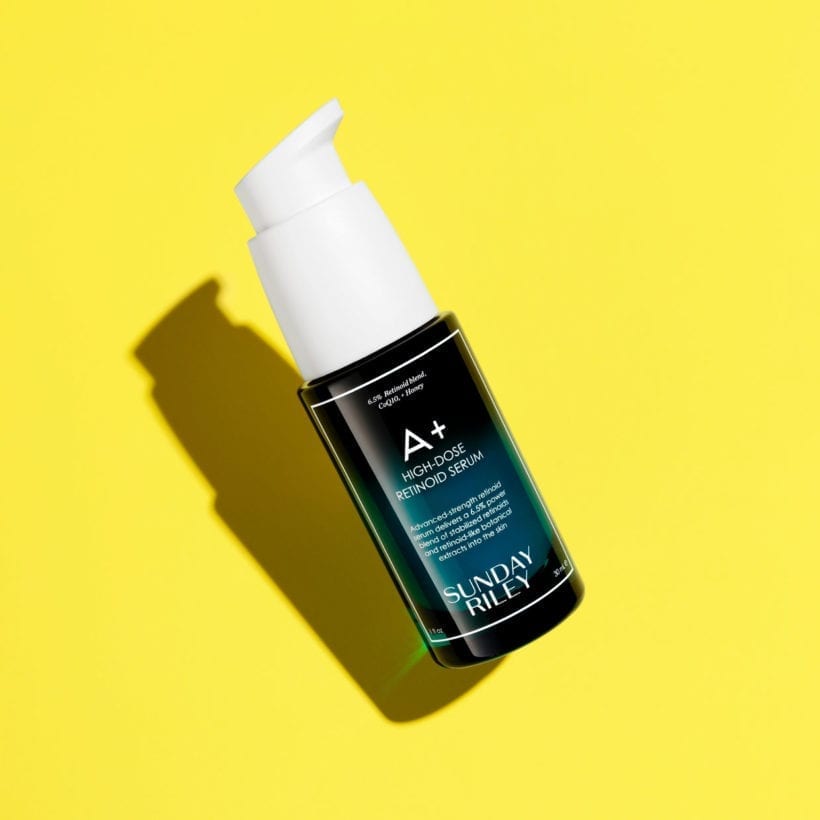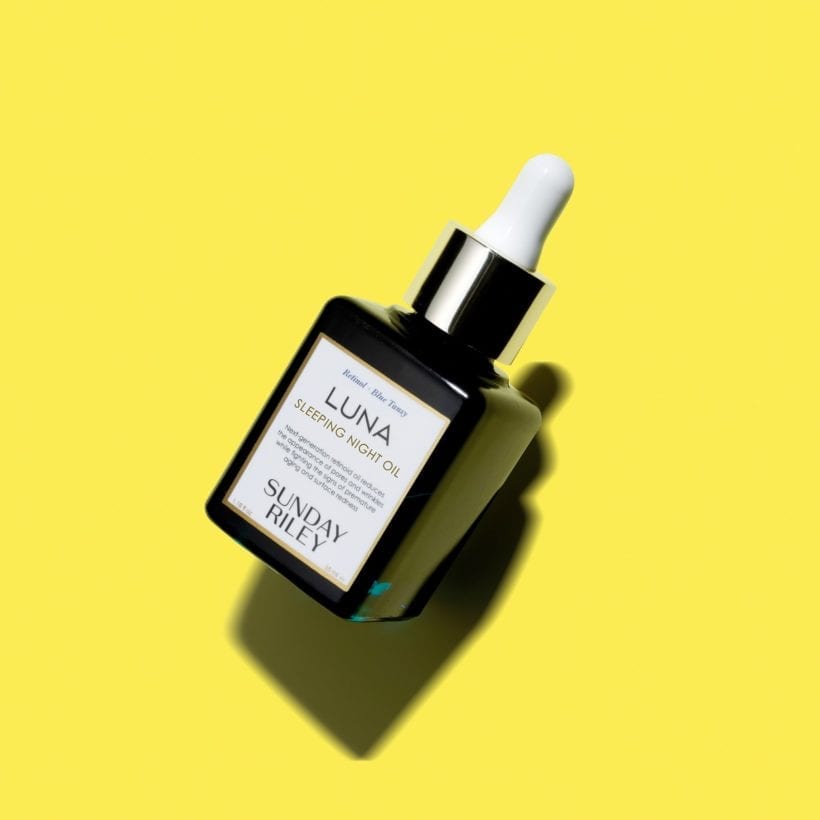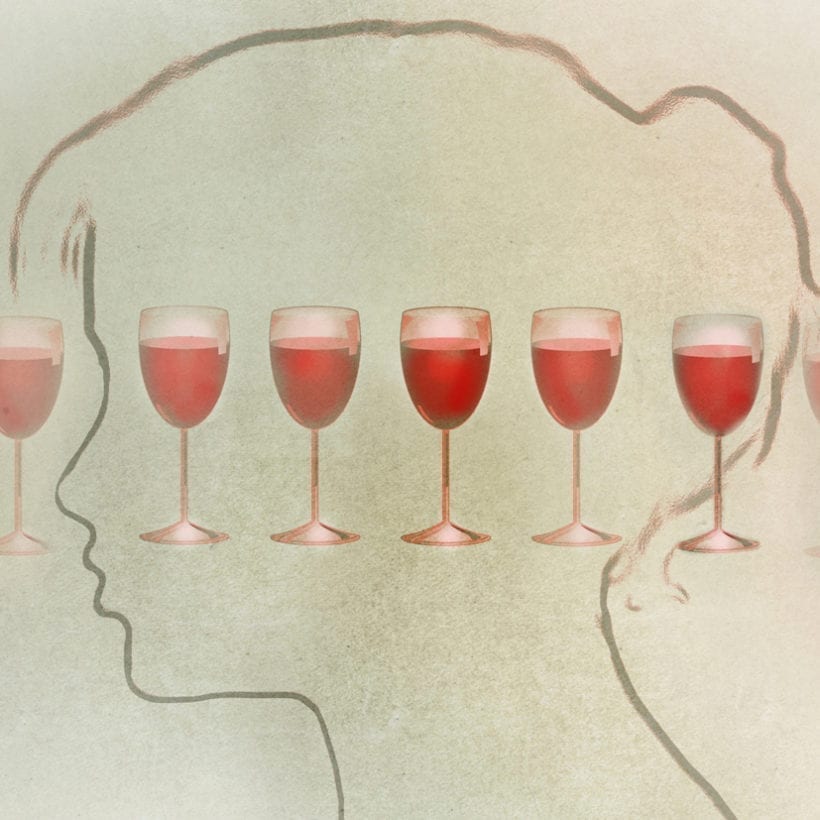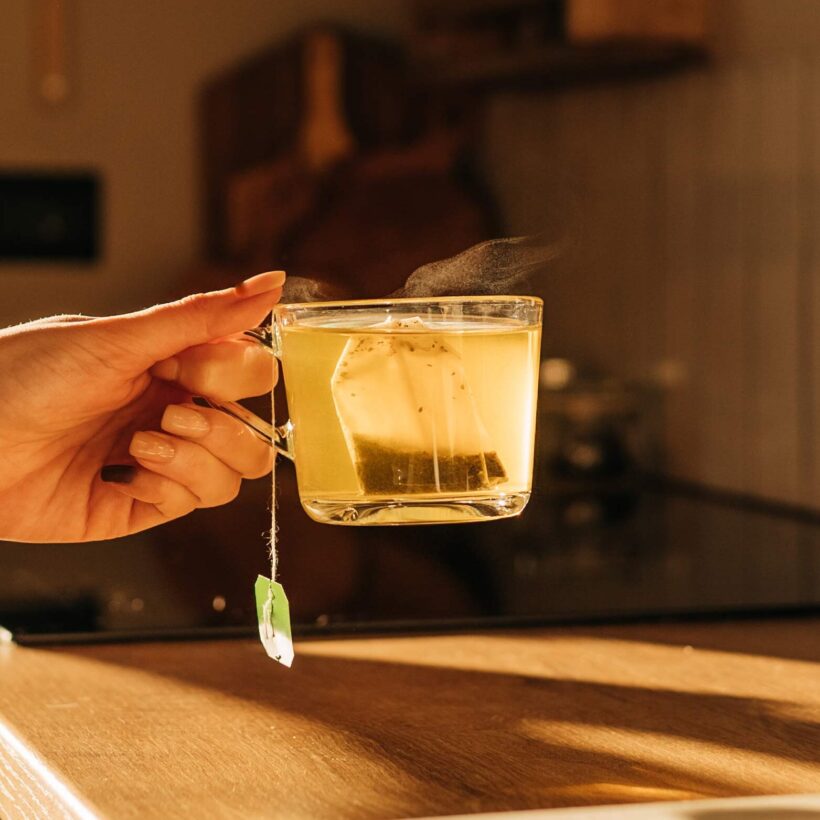Dry January (the trend of abstaining from alcohol for a month to recover from an excessive holiday season) has come and gone. Perhaps you found that ditching alcohol had amazing physical and mental benefits: better focus, weight loss, and lower blood pressure, for starters. One of the more surprising finds is that it seemed like our skin looked brighter, younger, and more hydrated — like it was also just waking up from a hangover. It got us thinking about the effect of drinking alcohol on your skin, and if putting down the wine glass can be good for us in the long run, not just a post-new year tradition. “Any period of not drinking will have a positive impact on your skin,” says Marisa Garshick, MD, FAAD of MDSC Dermatology, board-certified dermatologist. Below, she further helps us explain the connection.
How does drinking alcohol affect your skin exactly?
- Dark eye circles: You might not have thought of it this way, but “alcohol can lead to disrupted sleep, which can impact the appearance of the skin and make dark circles appear more noticeable. Blood vessels can be more dilated, leading to reddish-purplish discoloration in the undereye area.”
- Dehydration: Alcohol is a diuretic, which causes you to urinate more frequently, so you lose water from your body. “Drinking alcohol can lead to dehydration, which can cause the skin to lose its plumpness and glow.” Plus, it can exacerbate fine lines and wrinkles.
- Rosacea, flare ups and inflammation: “It is well known that alcohol can worsen rosacea and trigger flares, leading to redness, bumps, and pustules. Additionally, one study showed that alcohol intake was associated with an increased risk of rosacea. This is because alcohol can trigger both inflammation as well as peripheral vasodilation, which can lead to redness, flushing and bumps which are characteristic features of rosacea.” If you like to drink sugary cocktails (a single piña colada typically has double the recommended sugar for the entire day), they can produce even more puffiness in your skin.
- Breakouts: Speaking of sugar, thanks to the high sugar content of many alcoholic drinks in addition to the way alcohol dehydrates your skin, you may be prone to breakouts as it disrupts your skin’s microbiome.

- Blotchy, flushed skin: For some people who aren’t able to properly metabolize alcohol completely, it can lead to flushing. Many people of East Asian descent experience this type of reaction, known as the Asian Flush. “It is related to a deficiency in the ALDH2 enzyme which prevents the conversion of acetaldehyde to ethanol and causes a buildup of acetaldehyde which can lead to an inflammatory reaction and flushing.”
- Hives: “Studies show alcohol can trigger the release of histamine from mast cells which can increase the chance of hives or exacerbate hives. Certain types of alcohol, such as red wine, can increase histamine levels.”
- Psoriasis: “There have been associations between psoriasis and heavy alcohol consumption as well as eczema and alcohol use disorder. Additionally, because alcohol can be pro-inflammatory, it can exacerbate or worsen psoriasis.”
Remember that people with these conditions can still get them without drinking alcohol at all, but avoiding alcohol can prevent triggering symptoms or worsening them.
Does it matter what type of alcohol you drink?
There’s obviously a wide range of alcohols from beer to wine, clear liquor to brown. The general rule of thumb is that the clearer the alcohol, the less impact it has on your skin. “Traditionally, red wine had been thought to have a negative effect on the skin in the context of histamine release, flushing and redness, but interestingly red wine is also filled with antioxidants, including resveratrol, which can help protect the skin from free radical damage. That said, most alcohol can lead to some skin changes as beer tends to lead to puffiness and bloating and white wine can contain sulfites which may lead to redness and irritation in some individuals. Straight vodka does not have extra sugar or salt, providing no additional additives are made to create a mixed drink, so it is less likely to cause puffiness or redness compared to some other liquor options,” says Garshick.
How much alcohol does it take to see an effect on your skin?
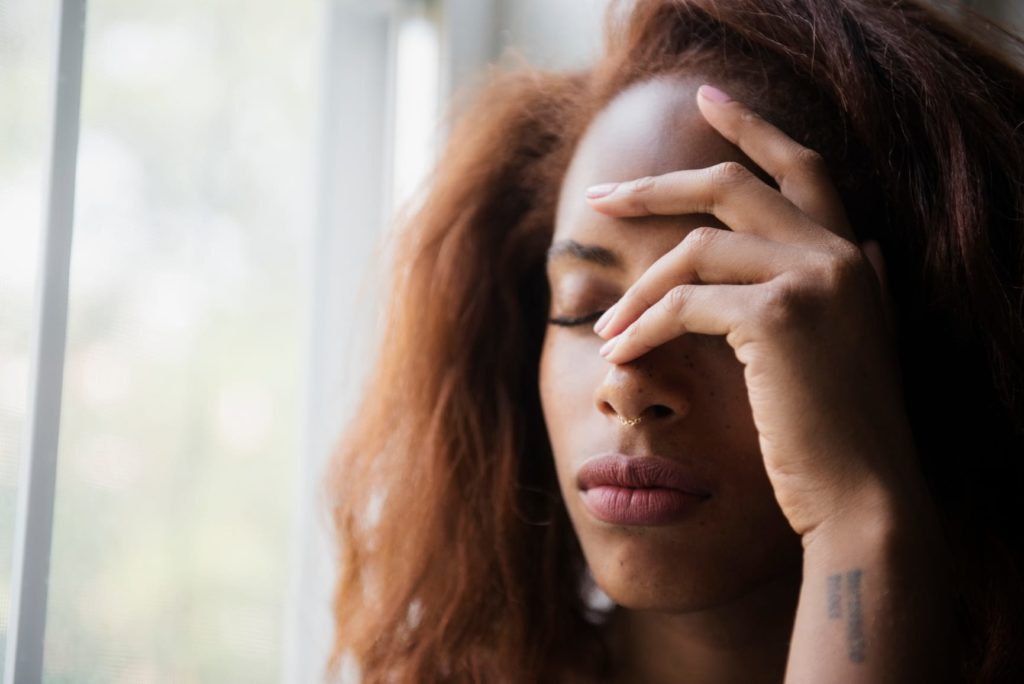 In addition to what type of alcohol you drink, the effect it has on your skin depends on how much you consume as well. “This can vary from individual to individual, as everyone’s threshold may be different,” she says. For instance, some people won’t notice any changes in their skin after having a couple of drinks. “While some patients, like those with rosacea who are already prone to redness, might notice it even after one glass of wine,” she says. In general, it’s about practicing moderation (excessive drinking is considered three drinks a day for women and four drinks a day for men).
In addition to what type of alcohol you drink, the effect it has on your skin depends on how much you consume as well. “This can vary from individual to individual, as everyone’s threshold may be different,” she says. For instance, some people won’t notice any changes in their skin after having a couple of drinks. “While some patients, like those with rosacea who are already prone to redness, might notice it even after one glass of wine,” she says. In general, it’s about practicing moderation (excessive drinking is considered three drinks a day for women and four drinks a day for men).
What other factors matter?
“The body’s ability to metabolize alcohol can vary depending on your age, weight, sex among other factors, and it is thought that as you get older, it may take longer to metabolize the alcohol. The longer the effects of alcohol persist in your body, the more likely they are to exert an effect on the skin,” says Garshick.
So I had a few drinks. How can I make sure my skin bounces back?
 “It’s good to stay hydrated after drinking as much as possible. It’s even better if you stay hydrated while drinking. Drinking water before, during, and after alcohol intake can help to reduce the effects of alcohol on the body. Staying hydrated and drinking water can be an important way to keep the skin hydrated and healthy. Additionally, continuing with regular use of moisturizer to help retain moisture in the skin can be helpful. Using hydrating products, such as hyaluronic acid, can help to plump the skin and replenish moisture in the skin,” she says.
“It’s good to stay hydrated after drinking as much as possible. It’s even better if you stay hydrated while drinking. Drinking water before, during, and after alcohol intake can help to reduce the effects of alcohol on the body. Staying hydrated and drinking water can be an important way to keep the skin hydrated and healthy. Additionally, continuing with regular use of moisturizer to help retain moisture in the skin can be helpful. Using hydrating products, such as hyaluronic acid, can help to plump the skin and replenish moisture in the skin,” she says.
Using retinol in your skincare routine can also help encourage your skin cells to regenerate more quickly.
How long do I have to stop drinking to see a positive impact on my skin?
If you have strong skin reactions to drinking alcohol, you’ll see the benefits of abstaining right away. “For others, it can take time,” she says. A month-long break (a la Dry January) might not be enough time for it to affect your skin, but taking regular selfies every week or so may help you determine whether it’s making a difference in your skin. You can speed up glowy skin results by “simultaneously “committing to a good skincare routine and staying hydrated by drinking lots of water,” she says. Drink at least eight cups of water a day (some spritzes of lemon and orange in your water can also aid in flushing out your liver).
Is there a happy middle ground?
There are still ways to unwind and get a buzz without wrecking your complexion. If you do decide to drink, choose clear hard liquor as Garshick suggests, or red wine, which contains antioxidants that, when consumed in moderation, are beneficial for your skin and heart. For other drinks, consider diluting your drinks (for instance, a white wine spritzer instead of a full glass of just wine) or limiting yourself to just a couple of drinks a week. Or, alternate drinks with a glass of water. You can take periodic peeks in the mirror while drinking to see how much your skin can tolerate. If you don’t see any differences in your skin after a drink, but you start getting splotchy after two, then you’ve determined your threshold. At the end of the day, it’s all about finding a balance.
